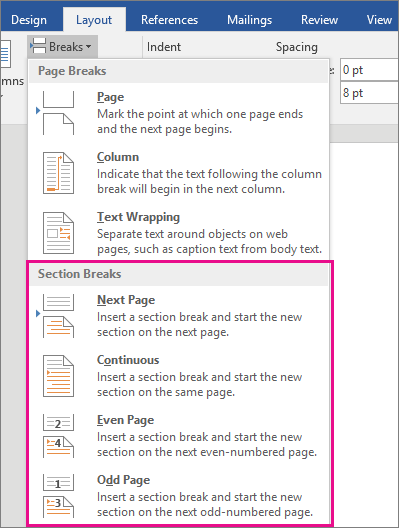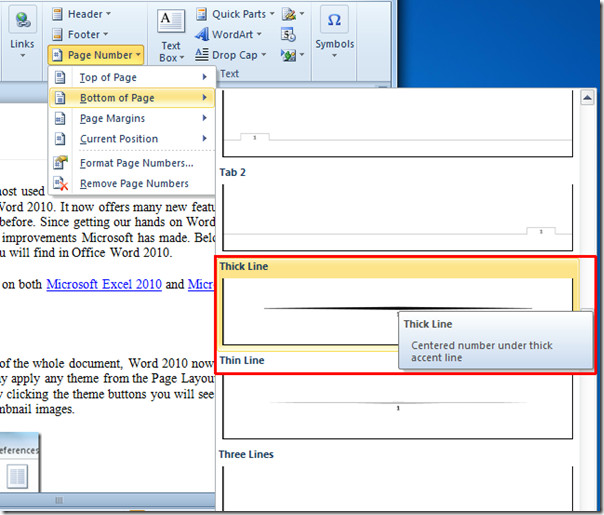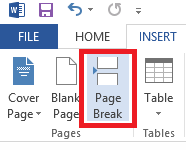

From the Ribbon, under the tab Page Layout, within the group Page Setup, click Breaks.Place mouse cursor at the bottom of the third page of the document.The first section will consist of the first three pages of the document.
HOW TO INSERT PAGE BREAK IN WORD 2013 HOW TO
The following procedure shows how to insert Roman numerals on the Footer section of the first three pages of a document and then integers for the rest of the document.įirstly, will divide the document into two sections by applying a Section Break. Each document section can have unique page number format. To achieve such page numbering style in MS Word, we need to use Section Breaks. or A, B, C,….etc.) in different sections of a document? Many writers follow this convention of using Roman numerals in the initial few pages and continue with integer numbers for the rest of the pages of the document. You simply click into the line containing the “Page Break” character, and then press the “Delete” key on your keyboard.What if you need to use different page number formats (1, 2,….or I, II, …. You can easily delete these breaks just as you would any other character.
HOW TO INSERT PAGE BREAK IN WORD 2013 MANUAL
If you select to view the non-printing characters in a document that contains a page break, you will see that a manual page break is identifiable by the words “Page Break” in the center of a dashed line within the document. This is helpful for inserting section breaks into document that are intended for double-sided, bound printing.


The “Odd Page” or “Even Page” section break will place a break, and then continue the next section on the next odd or even numbered page. A “Continuous” section break inserts a break, but continues the next section on the same page. They are “Next Page,” “Continuous,” “Odd Page,” and “Even Page.” A “Next Page” section break inserts a page break, but also creates two separate sections of the document so that each section can have its own unique page layout. There are three different types of section breaks that you can insert. For example, using a “Next Page” section break, each section could change the page layouts, like switching from a “Portrait” page orientation to a “Landscape” page orientation within a single document. When you insert a section break, you can then set the page layout independently for each section. We will now examine the other types of document breaks that you can insert into your Word documents and their uses within the program.Ī section break is much like a page break, but it breaks the sections of your document. You can also select these types of breaks for your document, if the need arises. When you click the “Breaks” button in the “Page Setup” group on the “Page Layout” tab of the Ribbon, you will see many of the other types of document breaks that are available for use in Microsoft Word. Note that while the page break may be the most commonly used type of document break that occurs, it is by no means the only type of document break available. Then press “Ctrl”+“Enter” on your keyboard or click the “Breaks” button in the “Page Setup” group on the “Page Layout” tab of the Ribbon and then choose the “Page” option from the drop-down menu. This should, of course, be before the automatic page break. Just click into the document at the place where you want the page break to occur. Inserting manual page breaks is not difficult.

Instead, you must insert a manual page break at a point in the page prior to the occurrence of the automatic page break. You cannot delete automatic page breaks in Word. For example, an automatic page break may leave one sentence on a second page, orphaned from the rest of the paragraph. Sometimes these automatic page breaks occur in places where you would rather not have them occur. When you create a document, you set a paper size such as 8.5” by 11.” When you reach the end of the specified page size in Word, it will insert an automatic page break. Need more Word training? Click here for the complete tutorial!


 0 kommentar(er)
0 kommentar(er)
